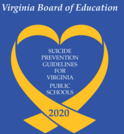
Schools are key settings for suicide prevention, intervention, and postvention. Most children and youth spend most of their day in school where caring and trained adults are available to help them. Teachers, mental health providers, and all other school personnel who interact with students can play an important role in keeping them safe (VDH, 2019). School personnel have a legal and ethical responsibility to recognize and respond to suicidal thinking and behavior, as well as other indicators of concern. Although many suicidal children and adolescents do not self-refer, most show some warning signs. Never ignore these signs. Schools must have clear policies and procedures for suicide prevention, intervention, and postvention, as well as trained school-employed mental health professionals and crisis response teams. Suicide prevention should be an integral component of a comprehensive, multi-disciplinary, and multi-tiered system of mental health and safety supports (National Association of School Psychologists, 2019).
- Subject:
- Social Development Instruction
- Material Type:
- Lesson Plan
- Author:
- Sarah Bazemore
- Date Added:
- 09/08/2022